实验5:开源控制器实践——POX
实验5:开源控制器实践——POX
一、实验目的
-
能够理解 POX 控制器的工作原理;
-
通过验证POX的forwarding.hub和forwarding.l2_learning模块,初步掌握POX控制器的使用方法;
-
能够运用 POX控制器编写自定义网络应用程序,进一步熟悉POX控制器流表下发的方法。
二、实验环境
Ubuntu 20.04 Desktop amd64
三、实验要求
(一)基本要求
1. 搭建下图所示SDN拓扑,协议使用Open Flow 1.0,控制器使用部署于本地的POX(默认监听6633端口)

- 构建拓扑
sudo mn --topo=single,3 --mac --controller=remote,ip=127.0.0.1,port=6633 --switch ovsk,protocols=OpenFlow10
2. 阅读Hub模块代码,使用 tcpdump 验证Hub模块;
-
开启POX:
./pox.py log.level --DEBUG forwarding.hub -
开启主机终端
mininet> xterm h2 h3 -
在h2主机终端中输入
tcpdump -nn -i h2-eth0 -
在h3主机终端中输入
tcpdump -nn -i h3-eth0 -
h1 ping h2
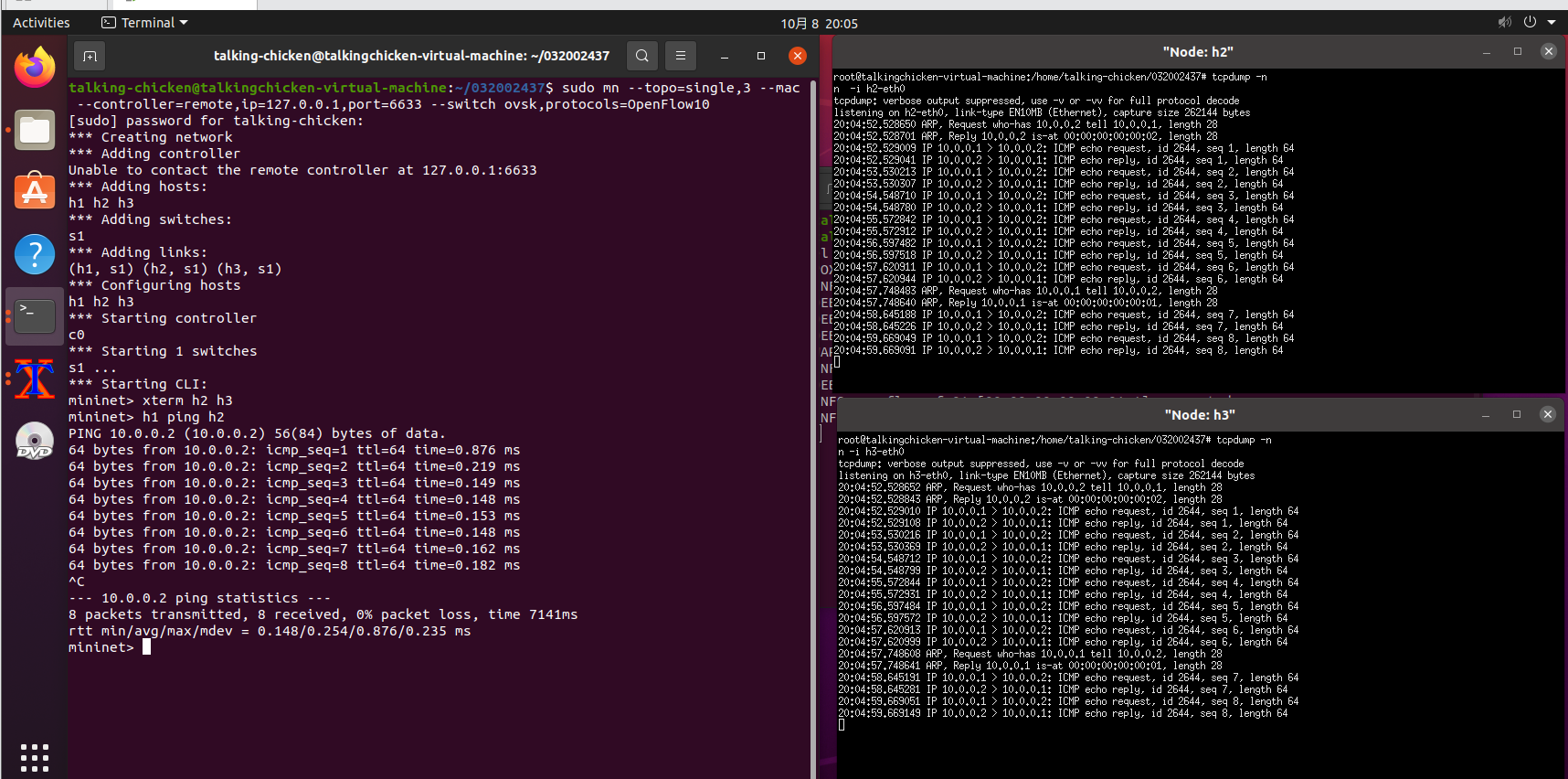
- h1 ping h3
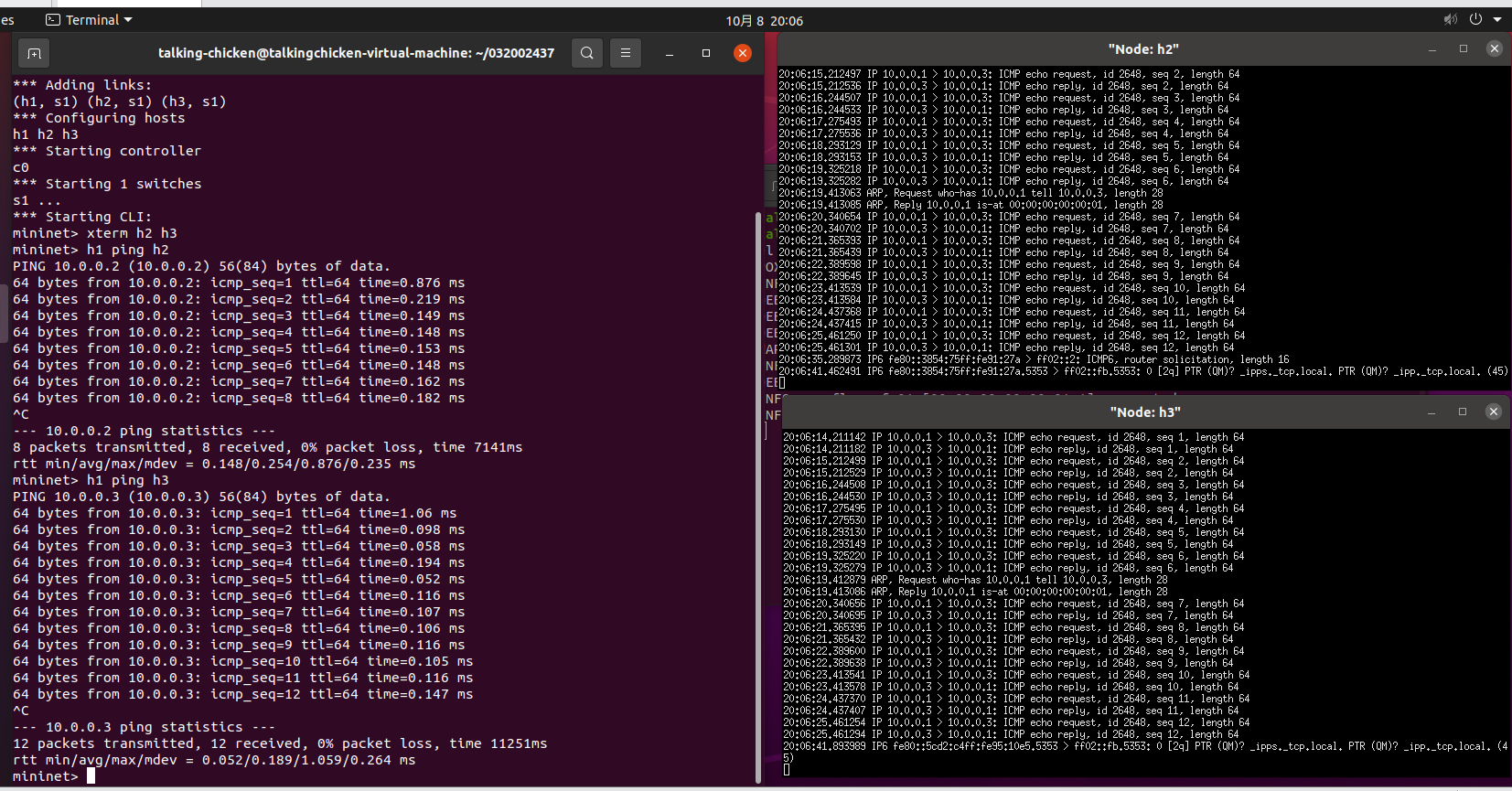
- h2,h3都可以接收到数据包
3. 阅读L2_learning模块代码,画出程序流程图,使用 tcpdump 验证Switch模块。
- 流程图
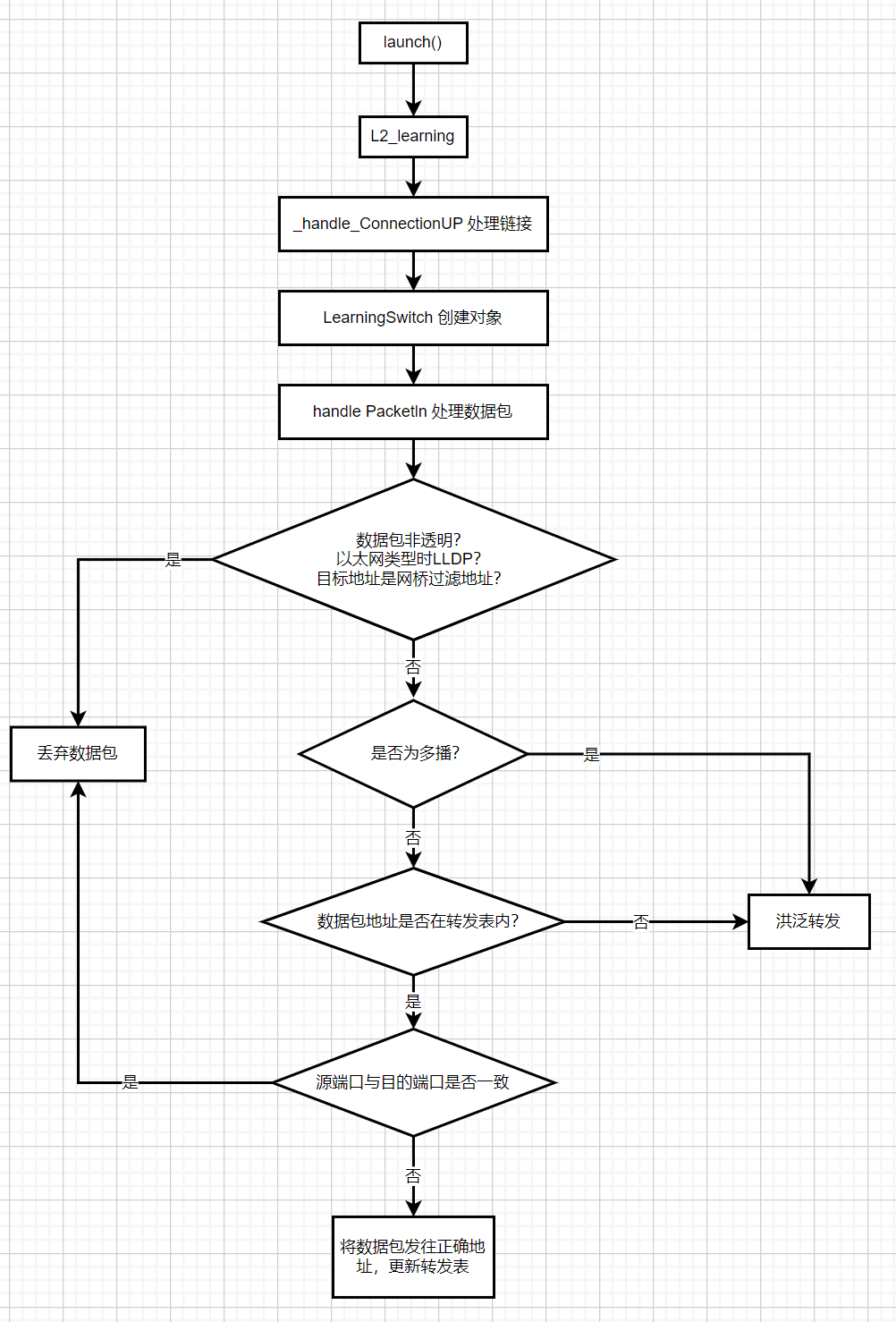
-
开启pox,运行L2_learning模块:
./pox.py log.level --DEBUG forwarding.l2_learning -
h1 ping h2
- h2收到数据包,h3没有收到数据包

- h1 ping h3
- h3收到数据包,h2没有收到数据包
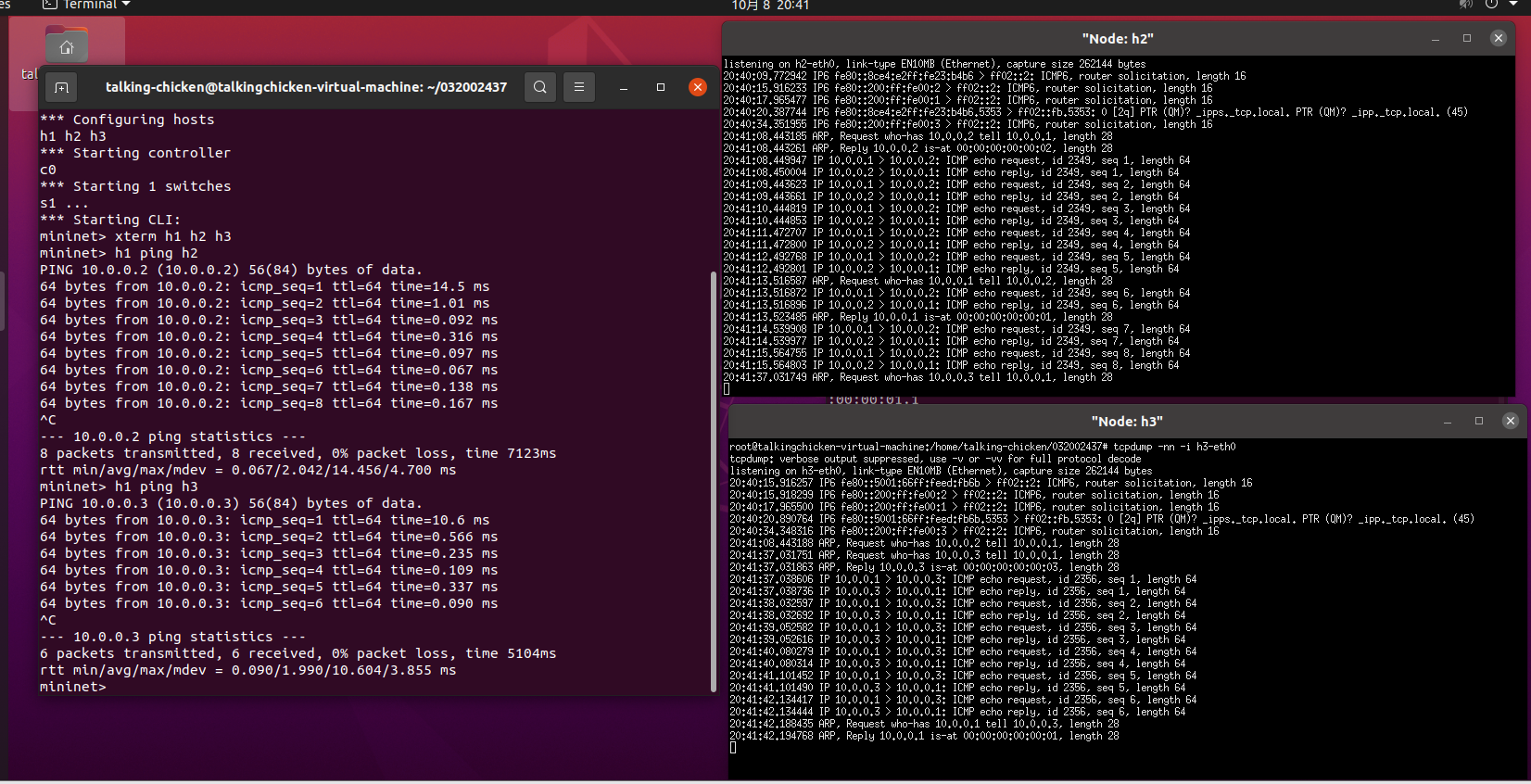
- 验证了Switch模块的功能:让OpenFlow交换机实现L2自学习。所以只有目的主机可以接收到数据包。
(二)进阶要求
1. 重新搭建(一)的拓扑,此时交换机内无流表规则,拓扑内主机互不相通;编写Python程序自定义一个POX模块SendFlowInSingle3,并且将拓扑连接至SendFlowInSingle3(默认端口6633),实现向s1发送流表规则使得所有主机两两互通。
- 建立拓扑,并用dpctl del-flows命令删除流表
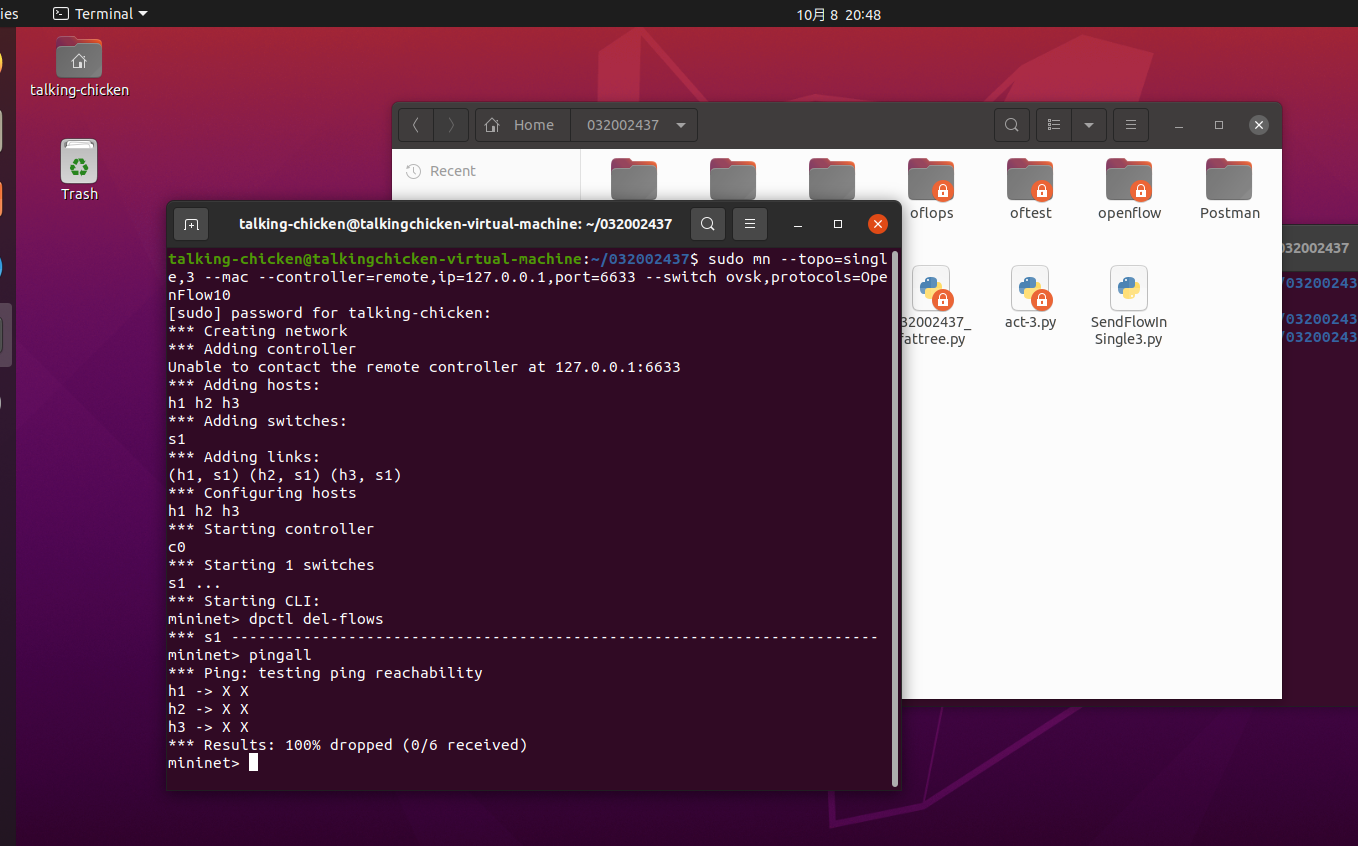
- 编写Python程序自定义一个POX模块SendFlowInSingle3
from pox.core import core
import pox.openflow.libopenflow_01 as of
class SendFlowInSingle3(object):
def __init__(self):
core.openflow.addListeners(self)
def _handle_ConnectionUp(self, event):
msg = of.ofp_flow_mod() # 使用ofp_flow_mod()方法向交换机下发流表
msg.priority = 1
msg.match.in_port = 1 # 使数据包进入端口1
msg.actions.append(of.ofp_action_output(port=2)) # 从端口2转发出去
msg.actions.append(of.ofp_action_output(port=3)) # 从端口3转发出去
event.connection.send(msg)
msg = of.ofp_flow_mod() # 使用ofp_flow_mod()方法向交换机下发流表
msg.priority = 1
msg.match.in_port = 2 # 使数据包进入端口2
msg.actions.append(of.ofp_action_output(port=1)) # 从端口1转发出去
msg.actions.append(of.ofp_action_output(port=3)) # 从端口3转发出去
event.connection.send(msg)
msg = of.ofp_flow_mod() # 使用ofp_flow_mod()方法向交换机下发流表
msg.priority = 1
msg.match.in_port = 3 # 使数据包进入端口3
msg.actions.append(of.ofp_action_output(port=1)) # 从端口1转发出去
msg.actions.append(of.ofp_action_output(port=2)) # 从端口2转发出去
event.connection.send(msg)
def launch():
core.registerNew(SendFlowInSingle3)
- 将拓扑连接至SendFlowInSingle3,实现向s1发送流表规则使得所有主机两两互通。
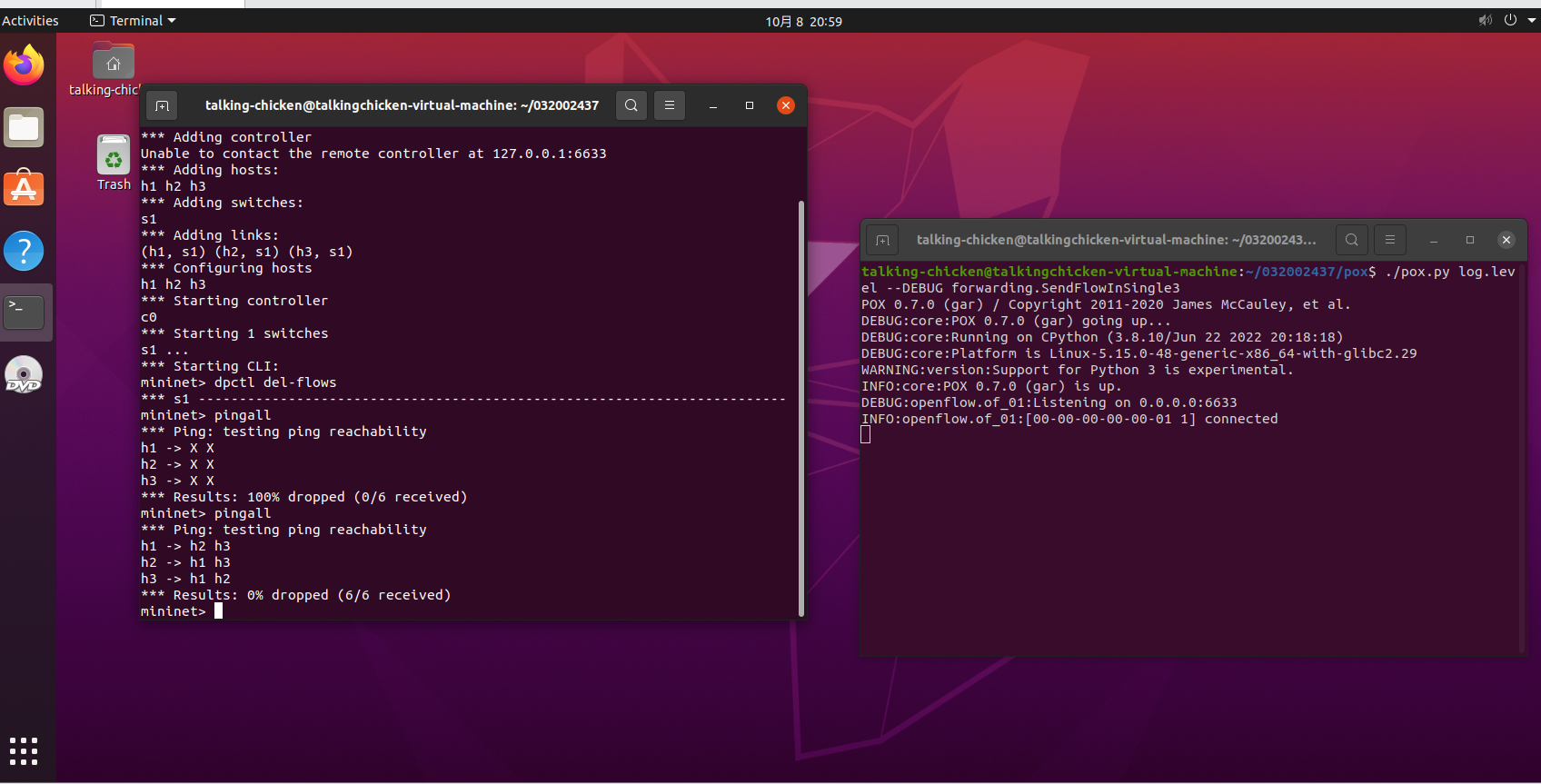
2. 基于进阶1的代码,完成ODL实验的硬超时功能。
- Python程序自定义一个POX模块SendPoxHardTimeOut
from pox.core import core
import pox.openflow.libopenflow_01 as of
class SendFlowInSingle3(object):
def __init__(self):
core.openflow.addListeners(self)
def _handle_ConnectionUp(self, event):
msg = of.ofp_flow_mod() # 使用ofp_flow_mod()方法向交换机下发流表
msg.priority = 1
msg.match.in_port = 1
# msg.actions.append(of.ofp_action_output(port=2))
msg.actions.append(of.ofp_action_output(port=3))
event.connection.send(msg)
msg = of.ofp_flow_mod()
msg.priority = 1
msg.match.in_port = 2
# msg.actions.append(of.ofp_action_output(port=1))
msg.actions.append(of.ofp_action_output(port=3))
event.connection.send(msg)
msg = of.ofp_flow_mod()
msg.priority = 1
msg.match.in_port = 3
msg.actions.append(of.ofp_action_output(port=1))
msg.actions.append(of.ofp_action_output(port=2))
event.connection.send(msg)
def launch():
core.registerNew(SendFlowInSingle3)
- 运行SendPoxHardTimeOut后再运行SendFlowInSingle3

四、个人总结
-
在关闭hub模块之后开启L2_Learning模块时出现报错。上网查找发现原因是6633这个端口号的进程还在进行导致的报错。解决方法是可以重启虚拟机,或者使用lsof -i [端口号] 查找端口对应进程号,再使用kill -s [进程号] 杀死进程。
-
使用./pox.py....命令加了.py后缀,导致报错。去掉.py后缀就可以正常运行。
-
通过这次实验了解了 POX 控制器的工作原理,初步掌握POX控制器的使用方法,学会了怎么使用 POX控制器来编写自定义网络的应用程序,进一步熟悉POX控制器流表下发的方法。学习了通过自定义编写Python程序进行主机间通信管理。



【推荐】国内首个AI IDE,深度理解中文开发场景,立即下载体验Trae
【推荐】编程新体验,更懂你的AI,立即体验豆包MarsCode编程助手
【推荐】抖音旗下AI助手豆包,你的智能百科全书,全免费不限次数
【推荐】轻量又高性能的 SSH 工具 IShell:AI 加持,快人一步
· 分享一个免费、快速、无限量使用的满血 DeepSeek R1 模型,支持深度思考和联网搜索!
· 基于 Docker 搭建 FRP 内网穿透开源项目(很简单哒)
· ollama系列01:轻松3步本地部署deepseek,普通电脑可用
· 25岁的心里话
· 按钮权限的设计及实现